
Geocaching & Woodcarving
Good day to you all! I have been busy these past few days with a hobby that I adore: Geocaching. While I was working on making some caches I thought: Geocaching & Woodcarving, two passions of mine that travel excellently together, I might almost do an article on them!
And here it is! 😉
Perhaps many will find it an off-topic argument, but I will explain that this is not the case. Then you have to space out and open your mind to new interesting connections all the time! But before I reveal to you why I find it a perfect match, it is best that we take the usual step back to allow everyone to centre the topic.
Geochaching what it is and how it started
Geocaching is a treasure-hunting type game that takes place with the use of a GPS. It was created by mere coincidence in America to test the reliability of the global positioning system (GPS) that can be used by civilians.
A gentleman from Portland, Dave Ulmer, hid the world’s first cache. It was a container with books and a notepad inside. He verified its location with his GPS and then communicated it to a group of friends explaining his idea. In fact creating the origins of this exciting game back on 2 May 2000.
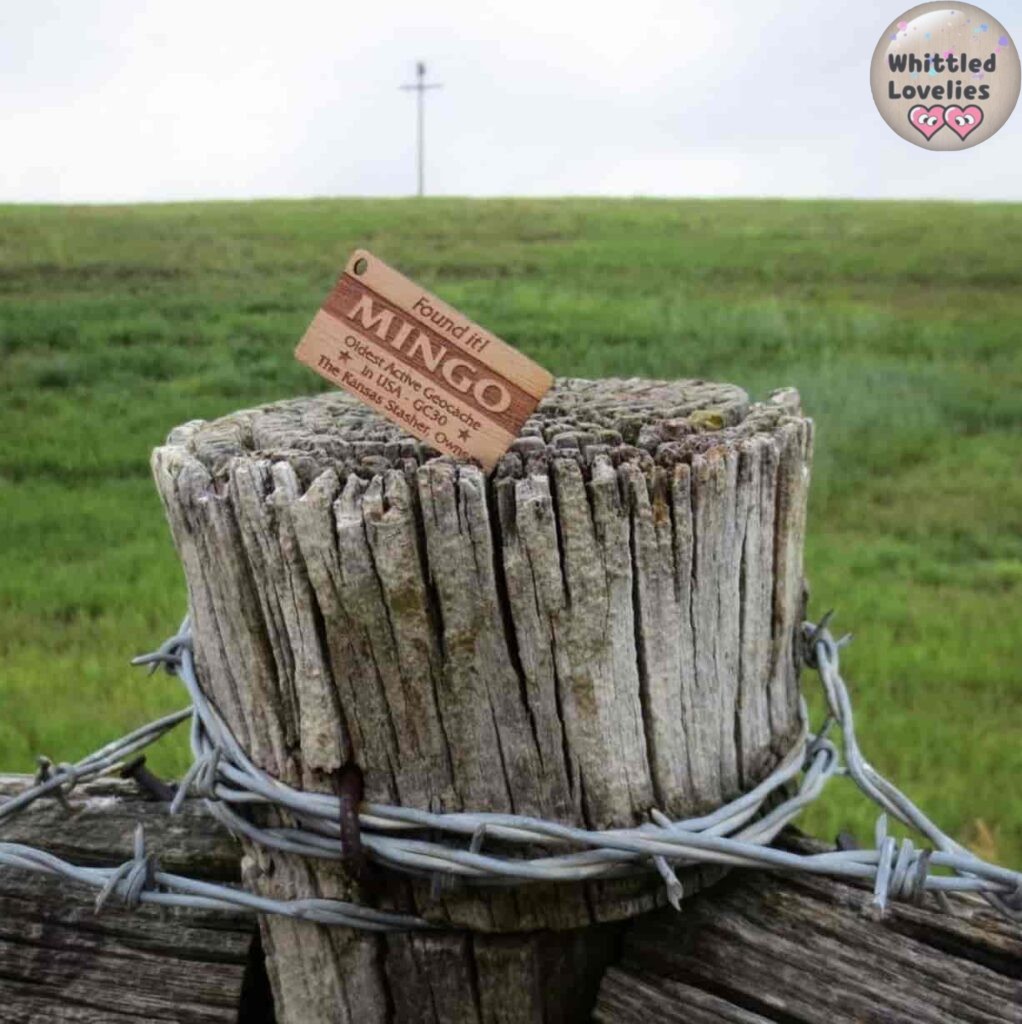
The idea was very simple but at the same time very appealing. With a GPS receiver, one can reach terrestrial coordinates all over the world with a margin of error of plus or minus 10 metres. Once the coordinate has been obtained, all that remains is to go to the location and look for where the ‘treasure’ might have been hidden. Like an old pirate map!
And so did Mike Teague a few days later. When he found his first cache it was immediately love! He decided to publish a website where anyone could find the co-ordinates and talk about the finds. Rather quickly, new find caches, created by users in different US states, began to spread like wildfire.
The History
Originally the game was called GPS Stash Hunt, and the cache was called Stash. But less than 15 days after the first published stash, confirming the great buzz of enthusiasm in those days, the game began to take off and a mailing list was even created.
A month after the famous 2 May 2000, the first stash was hidden in Australia and the phenomenon outside the borders of America went viral and worldwide. So much so that there is discussion on the site’s forum about changing the name of the game from Stash to Cache and then changing the name to Geocaching.
It is interesting how game-related thinking has evolved. In the beginning it was just a hidden box to be found. A month later, at the suggestion of a user on the mailing list, Matt Stum, they came up with the idea of seeing it as the actions that were done by the explorers of the past.
Explorers used to hide containers, called caches. They contained food or objects useful for survival. This way they did not have to carry them around for miles and could find them on their return without being looted.
It was also usual to leave objects to help future explorers. It was common practice to add objects to the cache or exchange them with others. Taking care never to leave the container empty. And this remains to this day, 23 years later, one of the basic rules of every cache hunter.
On 2 September 2000, Jeremy Irish officially registered the domain www.geocaching.com. From that moment on, it became the reference site for millions of Geocachers worldwide. In Italy, the first cache registered was in Sicily, on 27 April 2001.
Game Rules
Although years have passed since its origins, the game continues to remain alive thanks to the efforts of passionate members who continue to hide caches or renew those that are no longer maintained by users who no longer follow the game.
On the other hand, the company that owns the site and rights to date, Groundspeak in Seattle, is always trying to come up with new gimmicks to keep the game lively by introducing new features and caches.
The rules of the game are quite simple. As mentioned above, a registered user of geocaching.com hides a container, possibly watertight, in a reachable spot of his preference.
Inside the container are placed a number of small objects, gadgets, (depending on size just a LogBook) that can be exchanged, added or just observed, and a mandatory LogBook.
They are normally used for hiding places with historical, landscape, artistic, etc. interest. It marks the GPS coordinates, adds a hint that will serve to rectify the GPS evaluation error and sends it for review.
An reviewer checks that the rules of the game are respected and launches it on the site. Subscribed users see either a notification or an icon appear on the world map and can decide to take up the challenge and go and chase down the cache.
And when you find it…
Once reached, a booklet, called LogBook, must be signed. Exchange an item or add one (or leave everything as it is) and you have to put it back exactly where you started. All this without ever being seen by people outside the game called ‘Muggles‘.
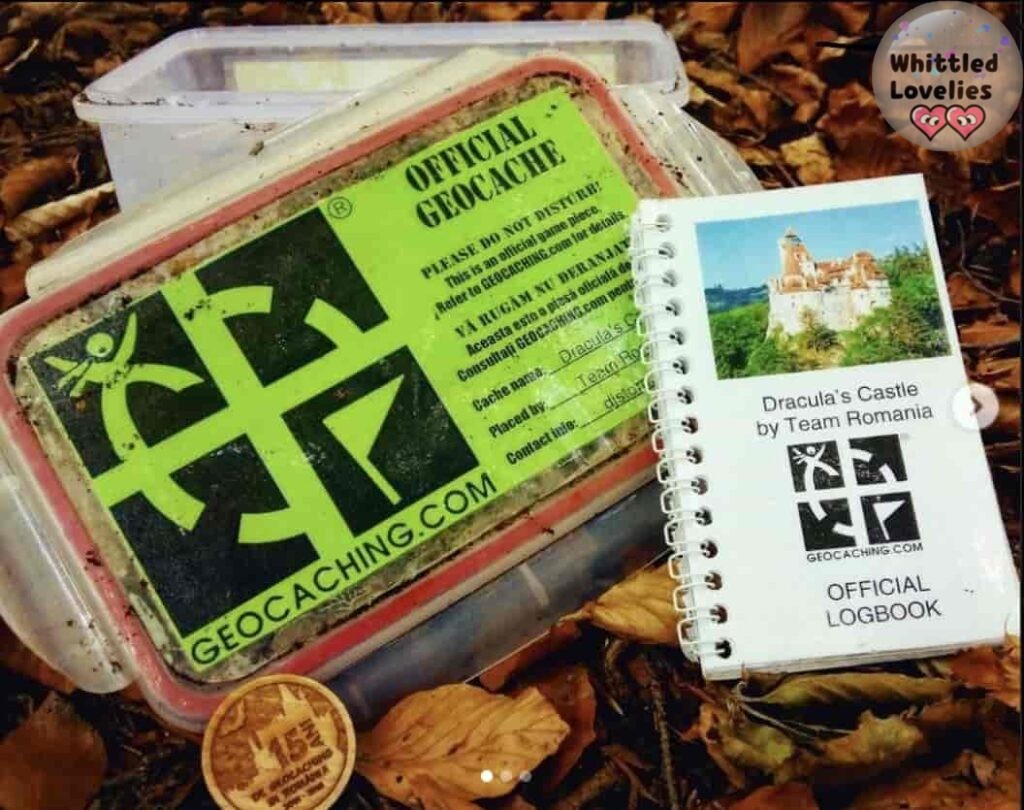
This term originates from the famous wizard saga Harry Potter from the pen of J.K. Rowling; it refers to people who are not endowed with magical powers. For Geocachers, a Muggle is someone who is not part of the game’s magic and therefore not aware of it. As they say, “they could be sitting on a cache and not know it!”
Some caches contain ‘mysteries’ and require you to solve puzzles to get to the coordinates. Others are traditional and have the location immediately visible. One of the good things about the game is that anyone can sign up and start playing for free.
Of course, the company, which is constantly making improvements to the site, has now also created an app that helps you get there with the phone’s built-in GPS. It tries to merchandise and collect money from premium users. But nothing detracts from the fact that, by giving up the app and creating your own caches with recycled resources, you can play completely free of charge.
Apart from the adrenaline rush of searching for treasures that are totally invisible to non-players, the other aspect that makes it a great game for me is that I am amazed every time at how many interesting and beautiful places there are in the world that you sometimes don’t know about.
I have lived in my area all my life. I have always prided myself on knowing it pretty well, and yet through geocaching I have discovered remote places of staggering beauty that I had absolutely no idea about. And you go from historical curiosities, to geological points, to legends, it’s not just a game, it’s a pleasure for the eyes and the mind.
Having made this necessary premise, more for Muggles than anything else, I go on to explain how woodcarving relates to this!
Geocaching & Woodcarving
Once you have grasped the concept of a cache of various sizes depending on your imagination, you must not see it as just a container. There are containers even a few centimetres in size, let’s say a tube of homeopathy granules, or a needle holder. This can become a perfect cache, as long as you can fit a leaflet in it to make a LogBook.
You can of course hide it like that, but what if you carve an object, drill a hole in it and insert this container inside? That’s where woodcarving comes in very useful! In my experience, caches carved in this way are the most satisfying, both to make and to find!
I, together with my faithful hunting companion, have been working out a forest trail these days and we have created all the caches by hand (no spoilers!😉). This is because we are both very nature-conscious. We don’t like it when you find dirt, especially in the woods, so we didn’t want anything that wasn’t eco-friendly.
I really love hidden caches away from busy places. My favourites are in nature, especially in the woods or in remote and isolated places. I like not being in a hurry, or to worry about being seen. I like to dedicate myself to inspecting the area in search of the detail that sparks you.
Magic!
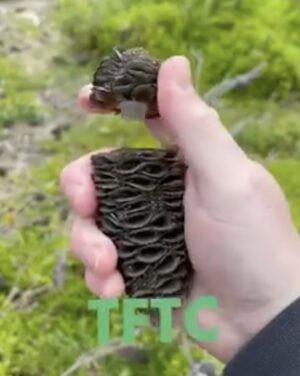
Finding a cache in a branch, in the bark of a tree applied so well that it cannot be seen except after minutes of study is a priceless moment. Or when you reach an innocuous birdhouse that by a mechanism opens and reveals its hidden wonder, you cannot be thankful enough to those who master the art of woodcarving!
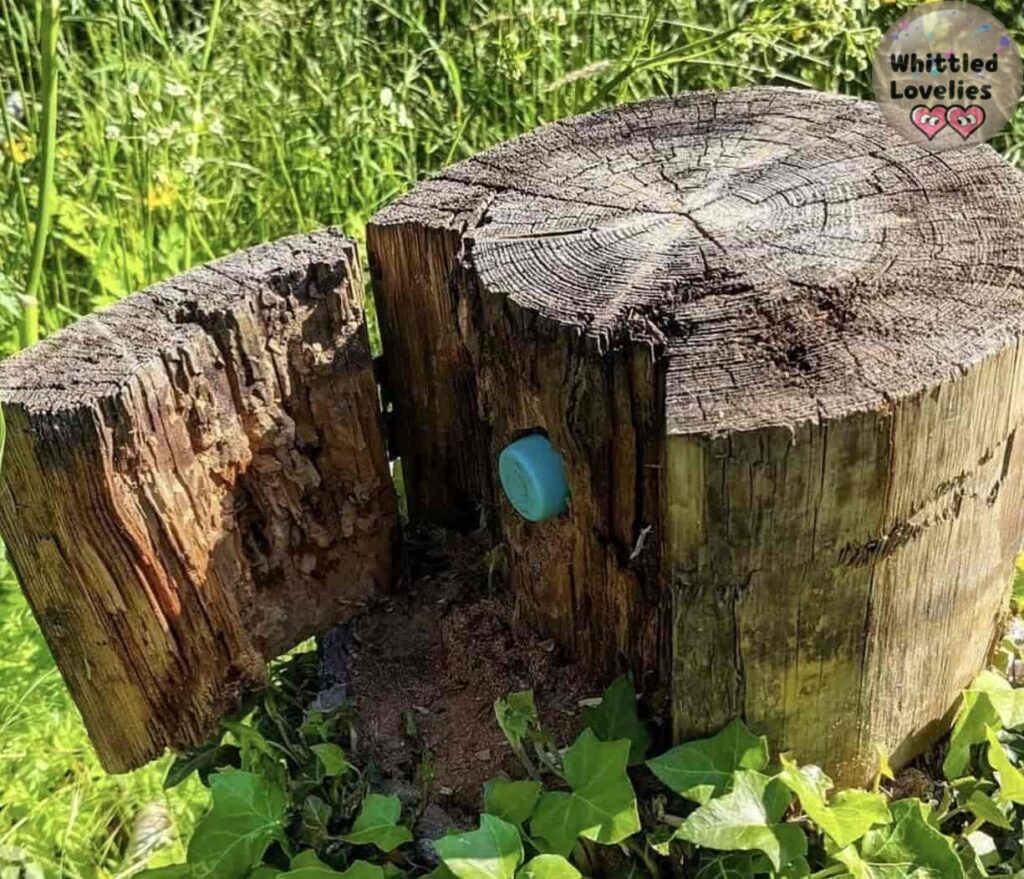
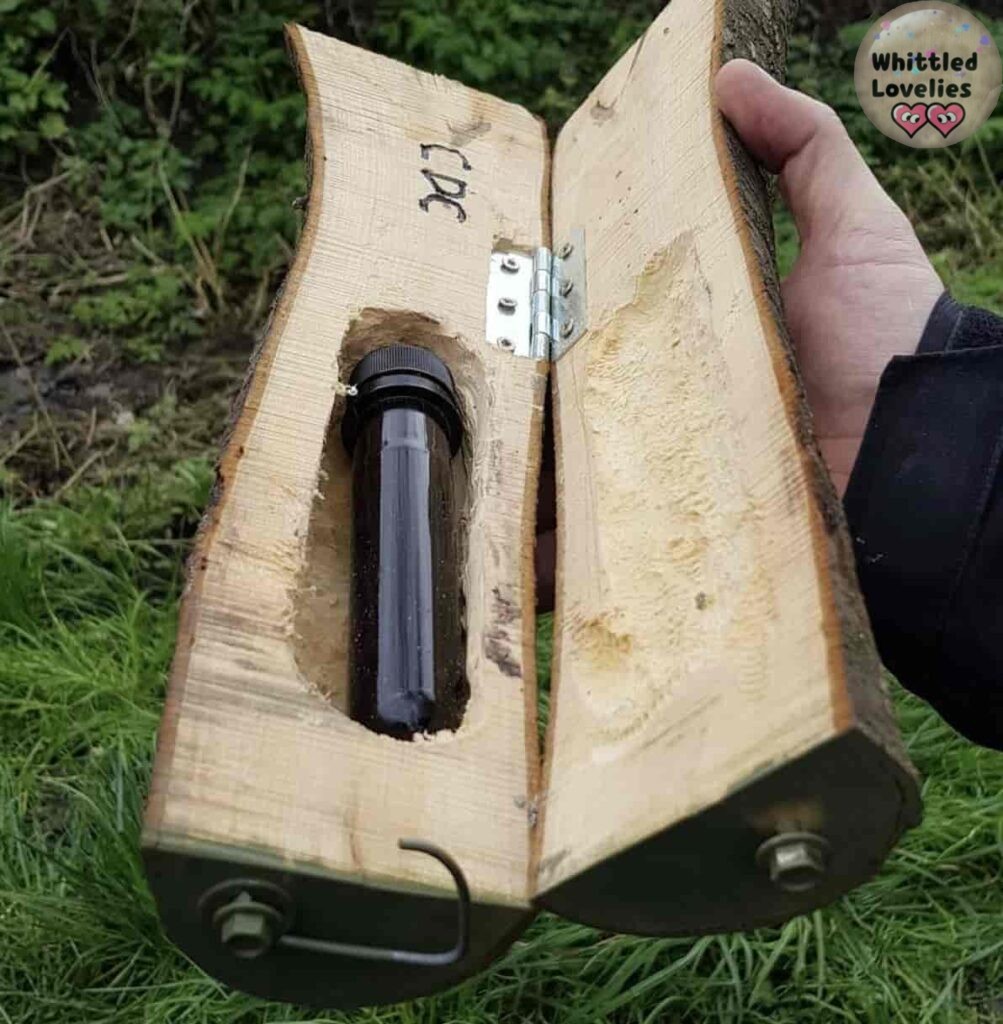
Fantasy reigns supreme, and you know, woodcarvers live by fantasy. A gnome in his little house, a little bird hanging from a branch, a log that looks whole but opens like the cap of a pen… these are all examples of the caches I have found over the years and who have exhilarated me to the point that I set out to create them myself!
Sometimes we only think of carving an object we have imagined only to sell it, or for our own pleasure, or even to decorate our house or garden. But sometimes sharing it in this way provides a surprise. An unexpected pleasure that elicits a smile and admiration from those who find it.
The game not only involves signing the LogBook, although it is not mandatory, but it is also a pleasure, to log in and comment on the official website. Many write their impressions, how they found it good or different or unmissable and recommend it to friends. The game also allows you to award FPs (favourite points), they are rare and are released based on how many caches you find, so you have to give them a few.
When an FP reaches your caches you know that you have done something splendid, something more, and you are rewarded in a way that is almost more satisfying than a like on social media. It is something that has been seen, touched, sought, experienced.
Unleash your imagination and remember that Geocaching is a game for all ages, try it and you won’t regret it! If this game still fascinates more than 3 million people worldwide, there must be a reason! I leave you with a small selection of mythical camouflages made by woodcarver for inspiration!
And now that you have seen the video, do you still think that Geocaching & Woodcarving are not a perfect match? 😉😇 If you enjoyed this article continue with another article in the category of Wood World! I look forward to the next article! Bye! 😘
This is an article written by a human for humans!
All articles in the blog are written by me. No contributors, no people paid to write content for me.
Posts written by guests or friends of the blog are marked under the title with the words “guest post.” These are friendly collaborations, contributions to the carving community.
No AI (artificial intelligence) support is employed in the writing of blog articles, and all content is made with the intent to please humans, not search engines.
Do you like my content?
Maybe you can consider a donation in support of the blog!

Click on the button or on the link Ko-fi to access a secure payment method and confidently offer me coffee or whatever you want!
From time to time, in articles, you will find words underlined like this, or buttons with the symbol 🛒. These are links that help deepening, or affiliate links.
If you are interested in a product and buy it suggested by me, again at no extra cost to you, you can help me cover the costs of the blog. It would allow me to be able to give you this and much more in the future, always leaving the content totally free.
